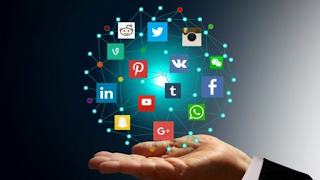In the United States, the typical digital marketing analyst salary income is $74,050 per year or $37.97 per hour. Entry-level salaries begin at $60,000 per year, with most experienced professionals earning up to $100,000 per year.
Digital Marketing Analyst Salary

Minnesota=$101,350
New York=$95,000
Maryland=$87,500
Massachusetts=$87,500
Washington=$85,000
Pennsylvania=$82,500
Illinois=$81,250
Connecticut=$80,000
Georgia=$77,500
Nevada=$76,750
Arizona=$75,000
Texas=$74,500
California=$71,500
Florida=$70,000
Virginia=$68,750
North Carolina=$67,500
Oregon=$65,250
New Jersey=$64,000
Ohio=$61,757
Utah=$61,500
Indiana=$60,000
Colorado=$60,000
Missouri=$45,892
Digital marketing analyst salary by Related
Product Manager=$111,453
Marketing Director=$97,500
Project Manager=$91,541
Business Development Manager=$84,994
Business Analyst=$82,914
Marketing Manager=$75,023
Digital marketing

Digital marketing, a subset of marketing, is the practice of promoting goods and services using the Internet and other online-based digital technologies including desktop and mobile devices. The way brands and companies utilize technology for marketing has altered as a result of its growth in the 1990s and 2000s.
Campaign marketing, data-driven marketing, search engine optimization (SEO), search engine marketing (SEM), content marketing, influencer marketing, content automation, campaign marketing, and social media marketing have all become commonplace in digital marketing campaigns as digital platforms have become more and more integrated into marketing strategies and daily life, and as more people use digital devices instead of going to physical stores.
The term "Digital marketing" encompasses non-Internet platforms that offer digital media, such as television, mobile phones (SMS and MMS), callback, and on-hold ringtones. Digital marketing and online advertising are distinguished from one another by the expansion to non-Internet outlets.
Digital marketing history
Technology advancement and the growth of digital marketing go hand in hand. In 1971, Ray Tomlinson delivered the first email, which laid the stage for individuals to send and receive data via various devices. This was one of the earliest significant occurrences.
The Archie search engine was developed in 1990 as an index for FTP sites, making this year more widely recognized as the beginning of digital marketing. Computer storage was already sufficiently enough in the 1980s to accommodate massive amounts of client data. Companies were deciding against restricted list brokers in favor of internet strategies like database marketing.
These databases changed the connection between buyers and sellers by enabling businesses to track client information more efficiently. The manual procedure, however, was less effective.
The phrase "digital marketing" was originally used in the 1990s. Customer Relationship Management (CRM) programs grew in importance as a result of the introduction of server/client architecture and the widespread use of personal computers.
Vendors were compelled by fierce competition to include more services, such as apps for marketing, sales, and service, into their software. With the advent of the Internet, marketers were also able to hold vast amounts of online consumer data thanks to eCRM software. Companies might receive the priority of customer experience and update data on consumer wants.
This resulted in the first clickable banner ad, the "You Will" campaign by AT&T, coming live in 1994, with 44 percent of all individuals who saw it clicking on the ad within the first four months.
Customers began browsing for items and making judgments about their requirements online first, rather than contacting a salesperson, in the 2000s, as the number of Internet users increased and the iPhone was released, creating a new dilemma for a company's marketing department.
Furthermore, a survey conducted in the United Kingdom in 2000 discovered that the majority of merchants had not established their own domain address. These issues prompted marketers to look for new methods to incorporate digital technology into market growth.
Marketing automation was created in 2007 in response to the ever-changing marketing environment. Marketing automation is the use of technologies to automate traditional marketing procedures.
Marketing automation assisted businesses in segmenting clients, launching multichannel marketing campaigns, and providing customized information to customers depending on their individual activities.
In this method, the user's action (or lack thereof) prompts a personalized message in their preferred platform. Despite the benefits of marketing automation, many businesses struggle to properly apply it to their day-to-day operations.
When the development of devices capable of accessing digital media led to rapid growth in the 2000s and 2010s, digital marketing grew more complex. Digital marketing continued to increase in 2012 and 2013.
With the rise of social media platforms like LinkedIn, Facebook, YouTube, and Twitter in the 2000s, people grew increasingly reliant on digital gadgets in their daily lives. As a result, they anticipated a consistent user experience while searching for product information across many platforms. The diversity of marketing technology has improved as a result of changes in customer behavior.
The terms "online marketing," "internet marketing," and "web marketing" are also used to describe digital marketing. With time, the phrase "digital marketing" has become more common. Online marketing is still a well-known concept in the USA. Web marketing is the name for digital marketing in Italy. Particularly since 2013, the phrase "digital marketing" has gained widespread use.
Online ad servings were predicted to increase by 4.5 trillion per year, while digital media spending increased by 48 percent in 2010. Businesses that utilize Online Behavioural Advertising (OBA) to target specific internet users account for a rising share of advertising, however, OBA also presents privacy and data protection issues for consumers.

What Is Digital Marketing?
Digital marketing is the dissemination of advertisements and information through various digital platforms.
Search engines, social media, email, apps, websites, and any other new digital channels that could emerge with the prospect of advertising are all included in digital marketing. Additionally, it covers offline outlets that use digital media.
Digital marketing is becoming the most effective type of advertising due to the expansion of digital platforms and media. Digital media is becoming more integrated into conventional channels, which underscores how important it is to a modern marketing plan.
We will delve deeper into the definition of digital marketing by looking at some instances and the advantages it may offer.
Digital Marketing Analyst Salary video.

Post a Comment
Don't share any link